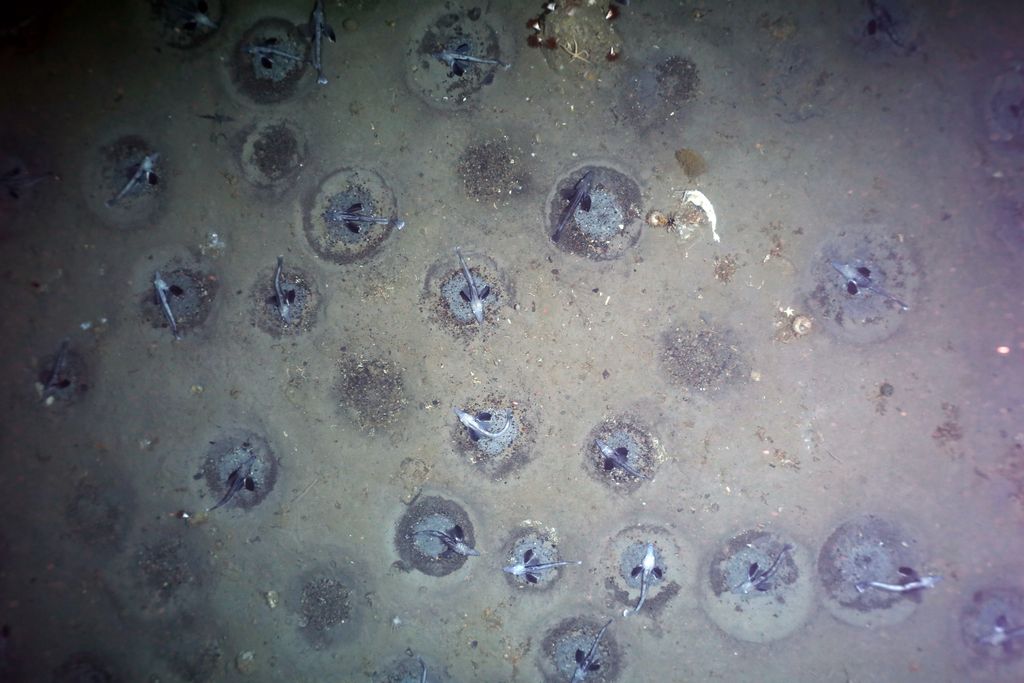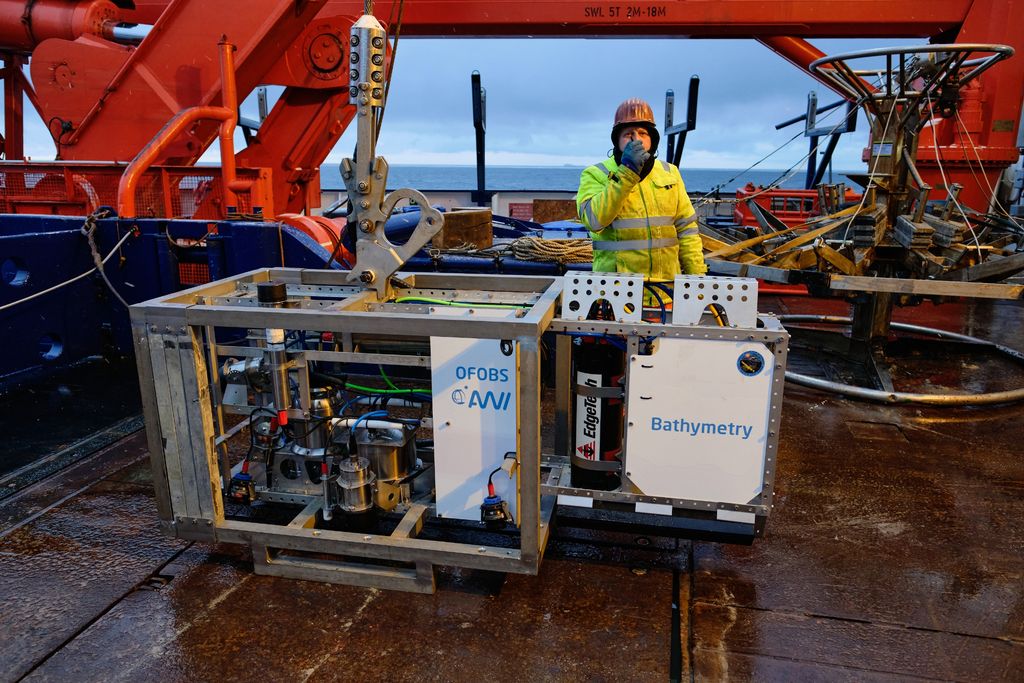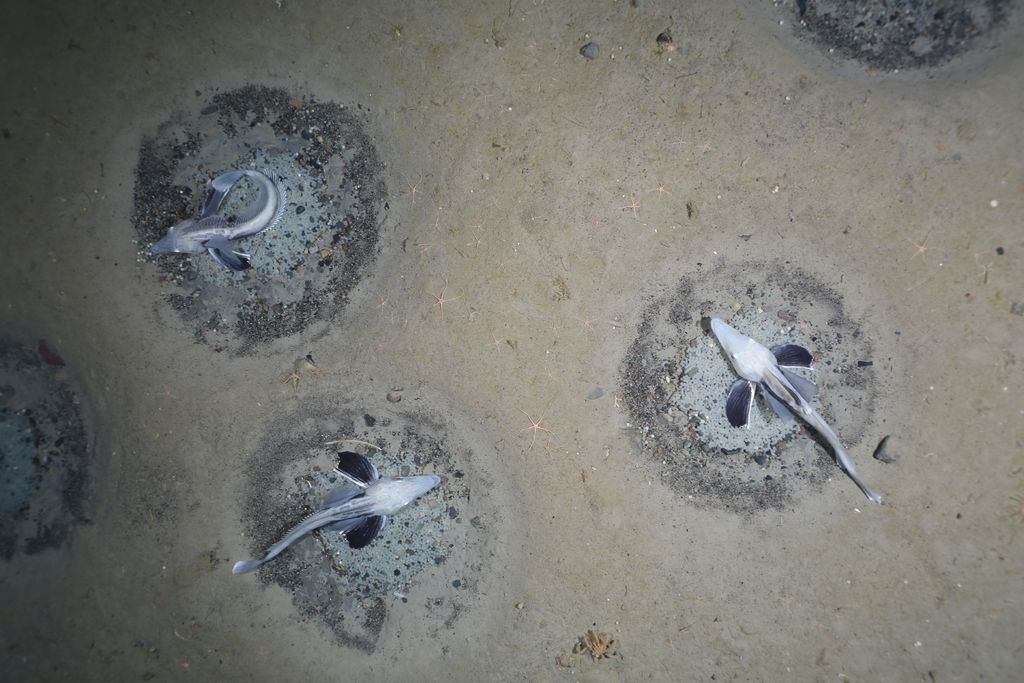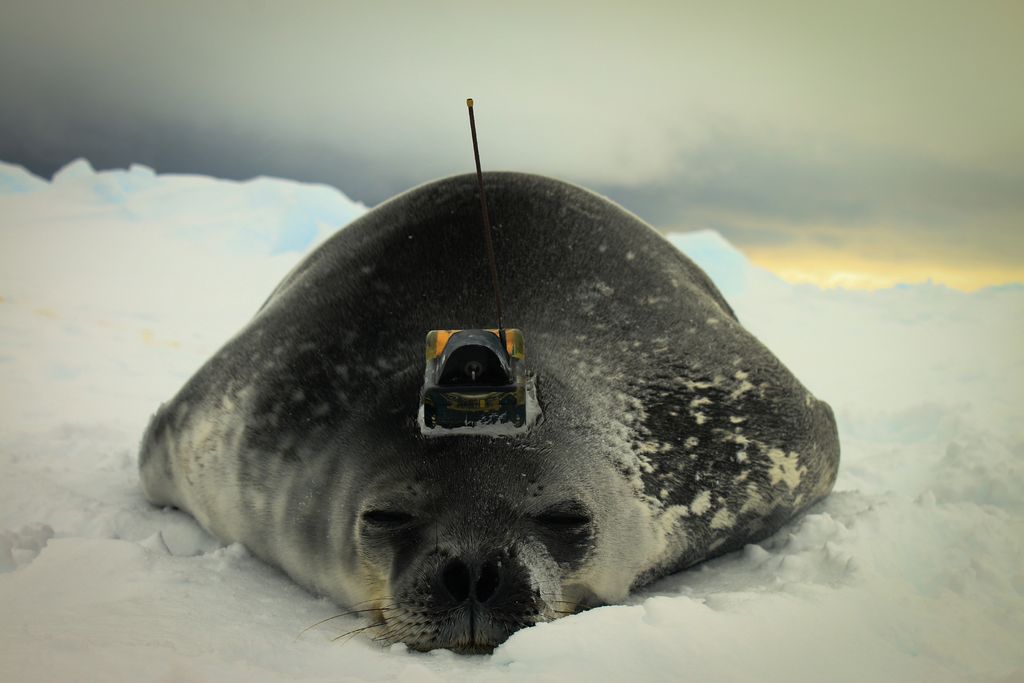South Weddell Sea —(Map)
Scientists exploring the ocean floor in Antartica have found the largest group of fish nests ever discovered. The huge area of nests came as a surprise, and will help scientists develop a more complete idea of the ocean food web in the area.
In the south Weddell Sea, not far from Antarctica’s Filchner Ice Shelf, scientists discovered a group of roughly 60 million icefish nests on the ocean floor. Before this, the largest group of icefish nests ever found had about 60 nests.

(Source: PS124, AWI OFOBS team, Alfred Wegener Institute.)
Researchers from Germany’s Alfred Wegener Institute on the research ship Polarstern were studying the ocean floor in Antarctica. To do this, they used a special device called OFOBS* that was towed along below the ship. The device collects information and takes pictures and video from 5-8 feet (1.5-2.5 meters) above the sea floor.
Lilian Boehringer, a research student, was the first to spot the nests. “They were everywhere,” she told the New York Times. During the first four-hour filming session, the scientists found over 16,000 nests.

(Source: Tim Kalvelage, Alfred Wegener Institute.)
The researchers used OFOBS to make two more four-hour “dives”, trying to discover the limits of the nesting area. This allowed them to calculate that the nesting site covers at least 92 square miles (240 square kilometers).
The scientists were studying the area because the temperatures there are slightly warmer than the areas around it. The water is still cold – barely above freezing – but that seems to be perfect for icefish.
The nests scientists found were in the shape of a circle, and about 2.5 feet (75 centimeters) across. Each nest held about 1,700 eggs. Most of the nests were being guarded by a male icefish. Researchers also spotted some dead icefish and some nests with no fish.

(Source: PS124, AWI OFOBS team, Alfred Wegener Institute.)
Because of the massive numbers of nests found, the scientists believe the icefish must play a very important part in the ocean’s food cycle in the area. The researchers think the icefish are an important food source for Antarctica’s Weddell Seals.
Weddell Seals are commonly spotted in the waters above the nesting site. Trackers placed on some Weddell Seals show that they dive all the way to the sea floor. Autun Purser, the lead scientist, said the seals “may well be dining on these fish.”

(Source: Mia Wege, Alfred Wegener Institute.)
The researchers plan to return to the area in April to learn whether the nests are used more than once. Before they left, the team placed a camera on the sea floor. It will take a picture of the nests in the area twice a day for the next two years. The scientists hope the pictures from this camera will help them learn more about the lives of the icefish.
Did You Know…?
The blood of icefish isn’t colored, but clear. These fish are able to take in oxygen directly through their skin.
* OFOBS stands for Ocean Floor Observation and Bathymetry System.
😕
This map has not been loaded because of your cookie choices. To view the content, you can accept 'Non-necessary' cookies.
